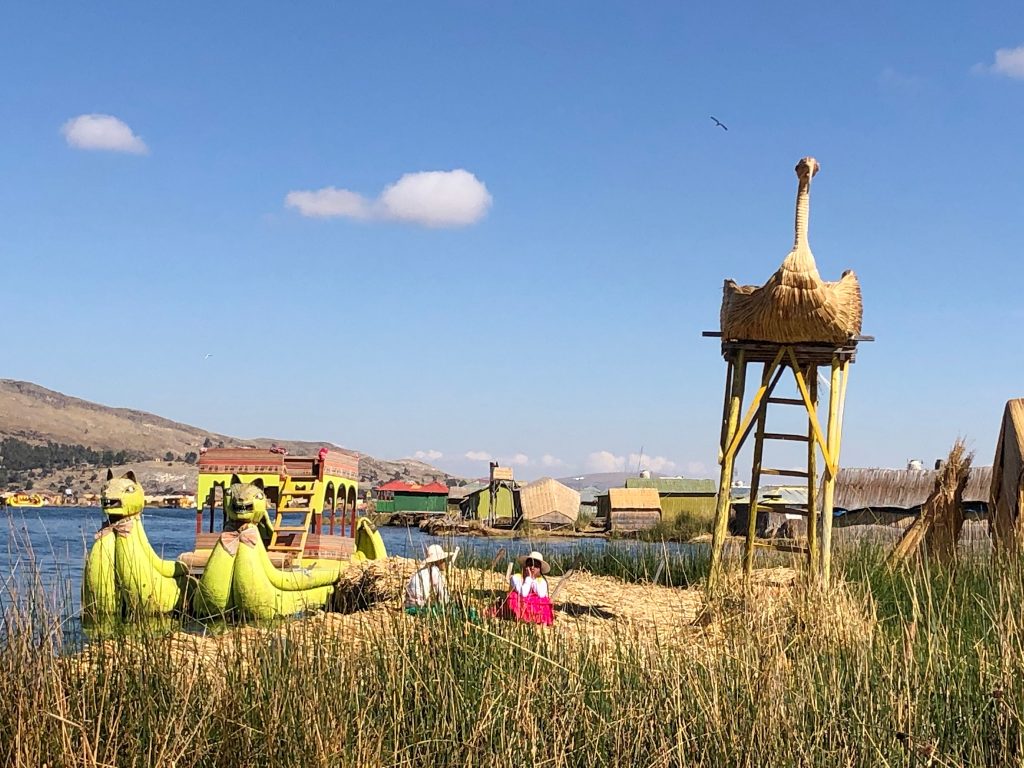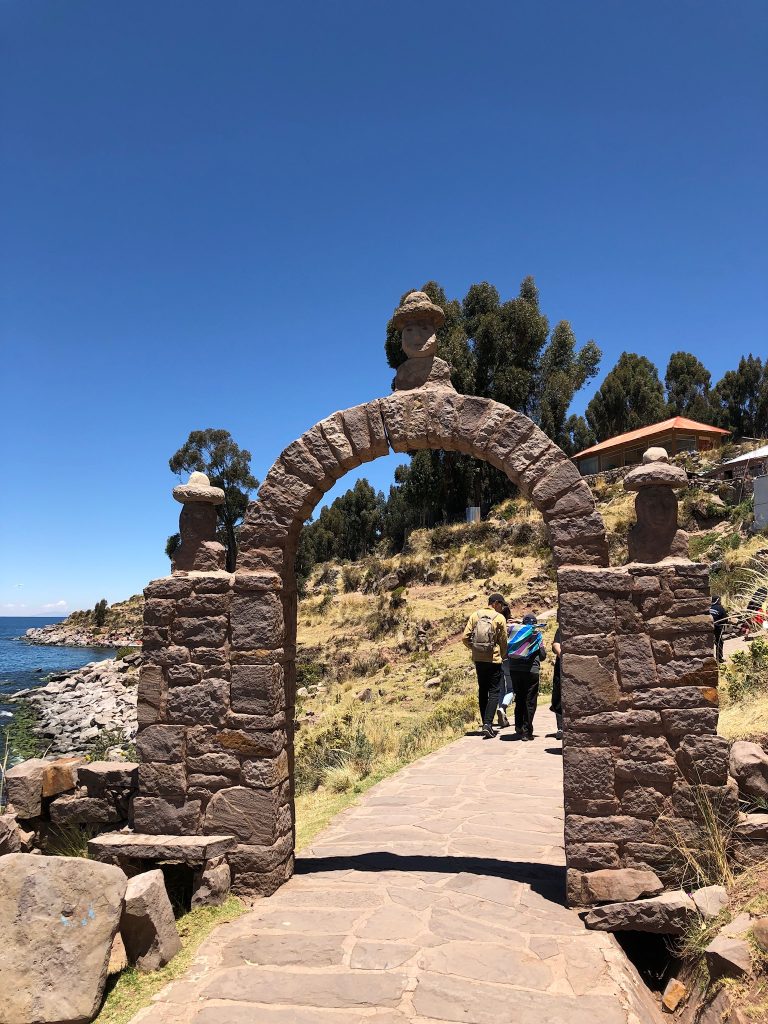Yet another early start to the day. The tour I organized for a day visiting two islands on Lake Titicaca would only pick up at certain central Puno hotels, so I took a taxi from my more remote (and fancy) place to a downtown hotel to meet the tour van, which then took us to the harbor and our boat. And I must throw this in before I go further: the name Titicaca comes from Quechuan, titi means puma, one of the sacred animals, and caca means mount. And it appears that the shape of the lake resembles a puma hunting a rabbit.
Lake Titicaca is the highest navigable lake in the world, sitting at 12,500 ft. It straddles the boarder between Peru and Bolivia and is the 18th largest lake in the world at 3,200 square miles. The Titicaca National Preserve shelters rare aquatic wildlife such as giant frogs, which live beneath the surface in the deepest parts of the lake. The depth ranges between 460 and 600 feet, but it tilts sharply towards the Bolivian shore where the greatest recorded depth is 920 ft. There are 41 islands on the lake, a few of which are densely populated, and some of which are floating islands made of reeds.
The boat was slow, but the company on board was good — as I tend to do I met some nice people, and some with some great travel stories. Our first stop was Uros, which is really a group of islands inhabited by the remnant of an ancient people called the Uru. Each island is home to about 6 families, and they’ve built their houses and their islands out of dried reeds called totora. Every two weeks they must continue to add layers of reeds to the ground of the island, sometimes having to raise their houses during this process. And an island lasts about 30 years before a new one has to be built. They also build these boats fashioned of bundles of dried reeds lashed together that remember the crescent-shaped papyrus craft on ancient Egyptian monuments. The “president” of the island we visited, Rodrigo, showed us how the reeds create a base for a small village and we were shown into their homes, which were small and basic, but were outfitted with a solar panel for electricity. We were also offered a ride on the balsa boat. As has been the experience, a mini “market” appeared while we were watching Rodrigo, and the weaving and other crafts of the people were available for purchase. The women also sang for us, in Quechua and English — Row Row Row Your Boat being a specialty.
Then it was back in our boat with a motor and a two hour trip out to Taquile island, which is a regular island about 1 mile by 3.5 miles in size. Populated by the Aymara people, they still practice their ancient methods of agriculture on stepped terraces that predate Inca times. They grow barley, quinoa, potatoes and corn. We also noted some sheep herding. The handicraft here includes all the typical hats and scarves and belts, but also included something different. The men all must learn how to knit. And they knit the long caps that they wear in colors depending on whether they are married or not. The shape of the hats mirrors that of the national flower of Peru, and the sacred flower of the Inca is a ruby red small trumpet — the Cantuta. We were treated to lunch at a private home, where they served quinoa soup and grilled trout to 25 people all from a tiny kitchen. They demonstrated the cap knitting, which the owner demonstrated doing as he walked around, with 4 tiny needles all in play, a dance celebrating the planting, how to make soap from a crushed herb, and then pulled several of us (including me) to dance with them.
Then it was down to the boat and a 2 1/2 hour trip back to Puno. A taxi at the harbor brought me back to my out of the way hotel and I’m about to crash after all these long days and early starts. And I will admit that I’m pretty ready to get to sea level — I’ve been at an altitude of at least 9,000 ft for 2 weeks. So tomorrow I fly to Lima. My Peru adventure is coming to an end soon, but still a couple more days of things to see!
















You find such interesting tours!